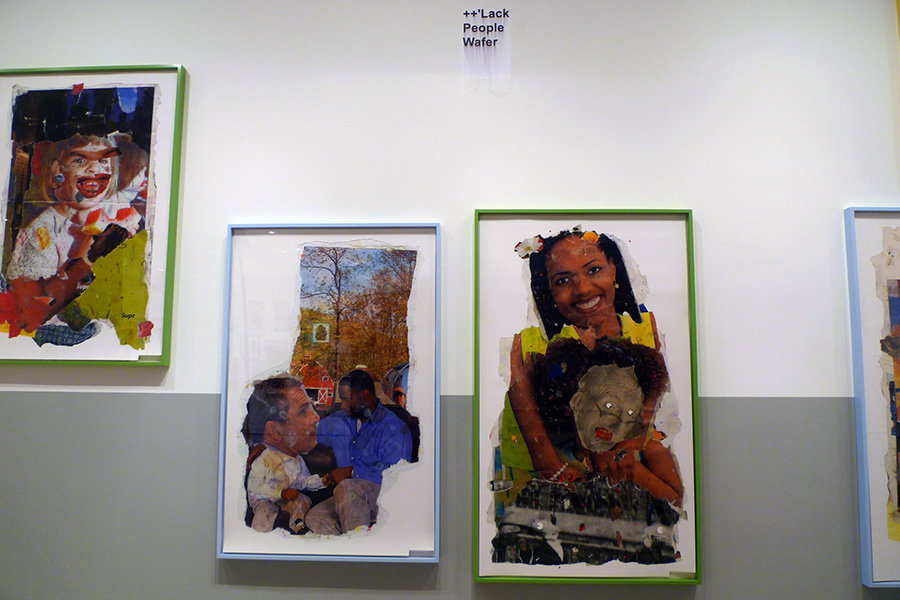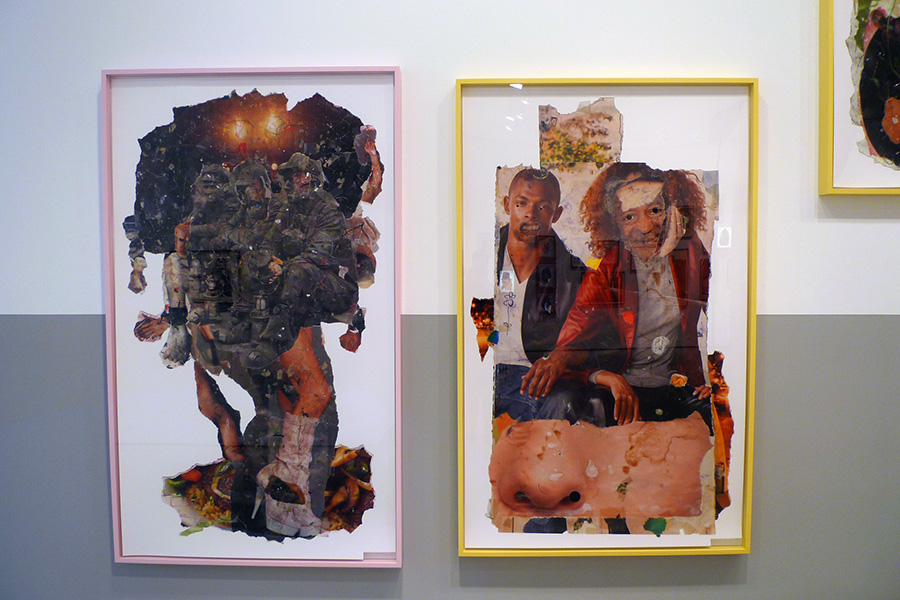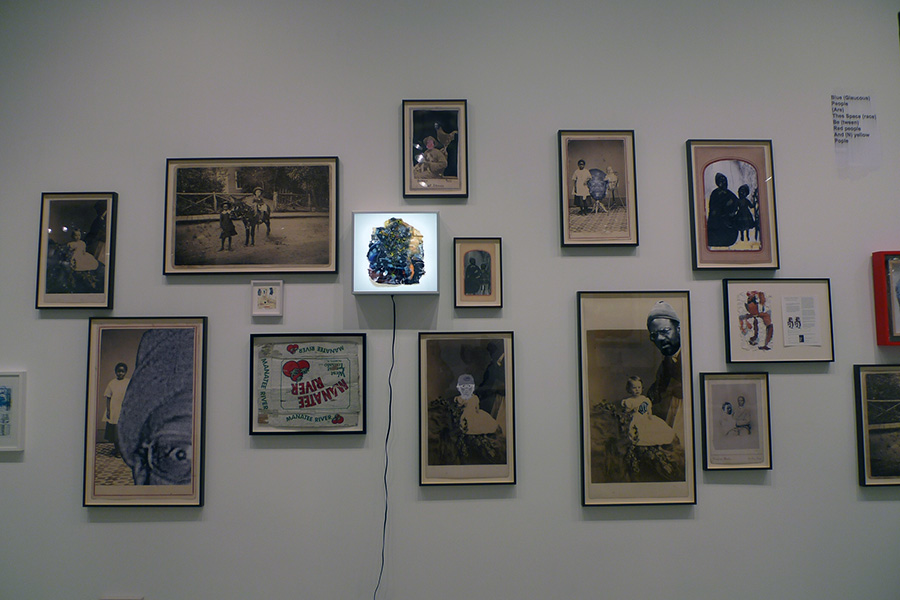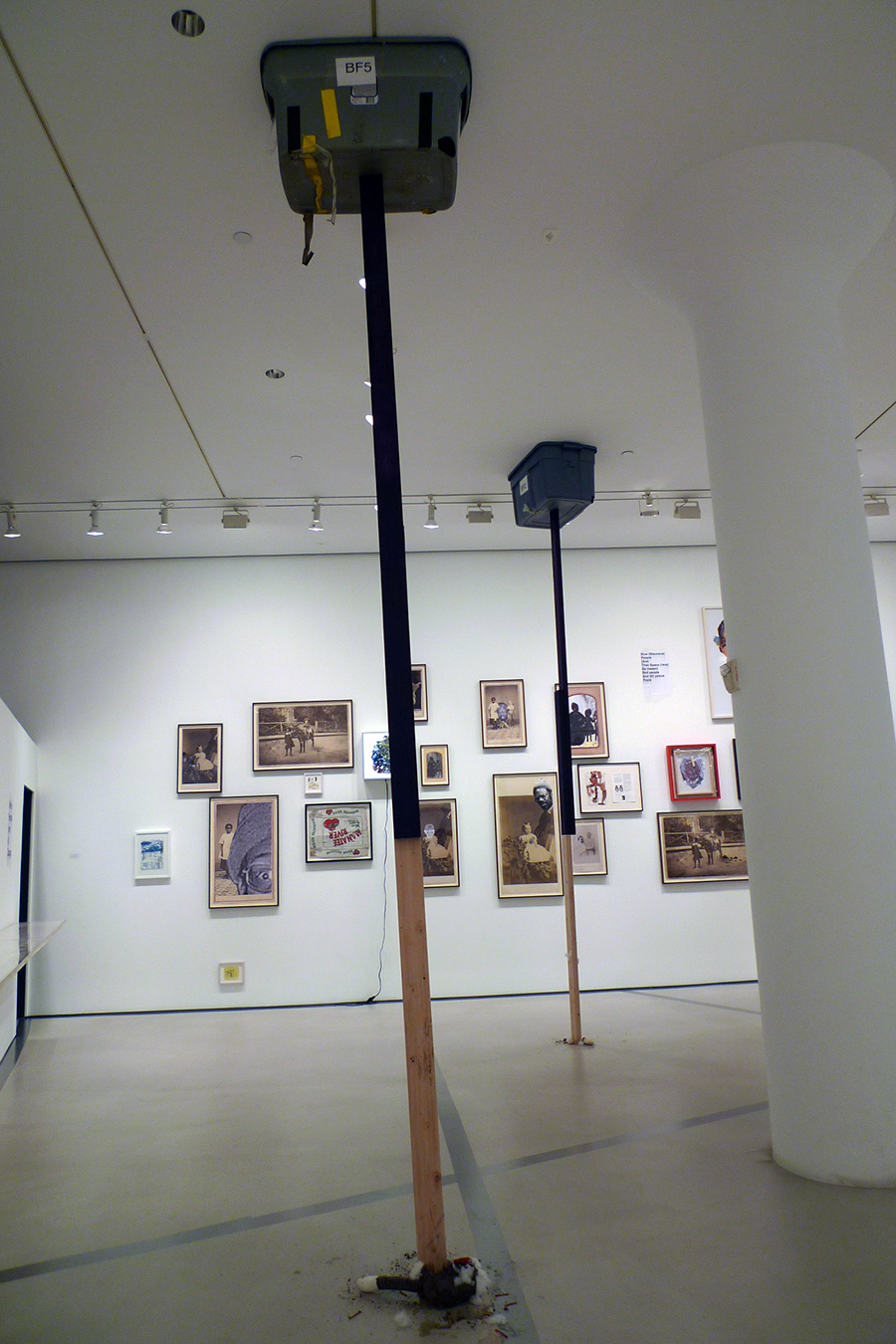Archive for September, 2018
Pope.L Bougie Irreverence

It is difficult to call any art placed in a blue chip Chelsea gallery irreverent, but Pope.L tries his best. Currently (9/13 – 10/27 2018) at Mitchell-Innes & Nash, Pope.L “One Thing After Another (Part Two)” stocks the gallery with collaged digital prints, framed found trash, assemblage, photo-collage, and a video of an erect penis attempting to balance a white whip cream pie. (As you might guess, the cream pie tips off the big, hard, black dick; only Brett Kavanaugh’s small white penis would hold that pie up.) The video is hilarious and I wish I had recorded a bit of it to include it here. It is a sharp and whimsical comment on desire, sex, race and privilege or rather lack of. The white pie and black dick are accompanied by a smoking digital black sock puppet that rises and forms like a snake from a corner of the video image.

The digitally printed collages tear apart political and celebrity figures, mockingly reframing them in unexpected contexts and pairings. Across the gallery, William Pope.L has inserted himself into historical photographs. Again, the visuals are at once comical and critical recontexualizing a problematic racial history of the United States.
Pope.L effectively reminds us to always look at the images we are fed with a critical eye. Question the images – where are they coming from, why are they being presented and what is it that they represent? What is our place in this culture? But in the end, lets not take ourselves too seriously, be creative, have fun, but always be smart.


“Kusama – Infinity” Uninspired
Last night, I watched the bio documentary “Kusama – Infinity” that attempts to capture the life and career of visual artist Yayoi Kusama by Heather Lenz. Unfortunately, I came away wondering why I paid to attend a film that did not present anything that I couldn’t have learned from reading her wiki page. The film is conventional, linear and superficial. It begins with Kusama’s childhood as the youngest of four children to wealthy parents who owned a seed company. It points out the clash between Kusama and her mother which perhaps was largely based on Kusama’s obsessive-compulsive disorder that may have not been understood or her mom had little patience for. And her father’s unfaithfulness which her mother had Kusama spy upon (hence the penis soft sculptures). So the film effectively presents a “traumatic” childhood for a sensitive child.
The film documents a letter by Yayoi to Georgia O’Keeffe asking for guidance in becoming a recognized artist that O’Keeffe responded to telling her that she has removed herself from the art world which is in the cities. It continues to poorly attended exhibitions in Matsumoto, Kusama’s hometown while by the sounds of it, Kusama has been disowned by her family. However, at a time when it was expensive to fly from Japan to the United States, Kusama manages to do so. I would have liked to have known how she paid for that flight and from where she gathered the U.S. dollars that she sowed in to her kimono.
“Kusama – Infinity” does an excellent job of capturing Yayoi Kusama’s 1957-1972 period in New York City and the seemingly classic struggle of the self-obsessed artist doing whatever it takes to be shown and recognized. As an artist based in New York City, I have witnessed too many times, the young, actually also not so young artists attending openings merely to try to schmooze with powerful curators, gallerists, collectors. As in all careers, it’s all about the network and getting cozy with the figures that will help one scale the ladder. So it appears that Kusama did this relentlessly, enough so to find a patron to pay for her studio and art supplies and she used her Japanese feminine cuteness/allure to do so.
The film also attempts to paint Kusama as a trail blazer – she was the first to wallpaper a gallery, before Warhol, she was the first to do soft sculptures, before Oldenburg and a mirror room before Samaras. The first two, I don’t really buy. If Warhol was inspired by the wallpaper, great, and the cows are his images. If Oldenburg shifted from paper mache to fabric due to Kusama, smart, and again the content is his. However, Lucas Samaras stealing the mirror concept is pretty outrageous as he had not done anything like that and he basically stole Kusama’s concept and placed it in a high profile gallery. So that I can certainly recognize and even understand a self-obsessed artist dropping herself out a window (she survives due to falling onto a bicycle).
Regarding her naked body happenings, a lot of artists were doing happenings at that time. And Yoko Ono’s “Cut Piece” in 1964 seems much more powerful than any of Kusama’s performances. That said, I would have liked to have learned how she went about organizing them.
The film captures her intervention at the Venice Biennial which is commonplace today, I don’t know if it was so in 1966. The film also presents Kusama’s platonic relationship with Joseph Cornell, her move back to Japan, her re-discovery by the art world in the late 1980s and her rise to current fame. However, the film fails to delve deeply into her psyche, her persona. It does not present anything regarding her siblings and their take on her. The sequences of interview with Kusama present little depth. Perhaps there isn’t much more than obsessive compulsive disorder fulfilled by painting dots and a relentless desire for fame. Unfortunately the film is boring, but short enough that it doesn’t get tedious.